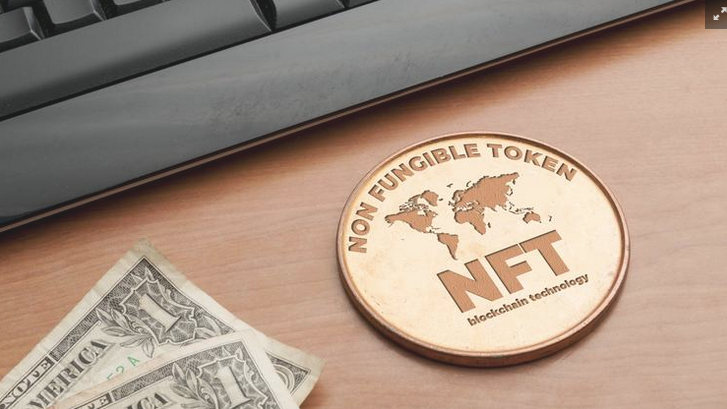Non-fungible tokens (NFTs) have taken the world by storm as sales exceeded $2 billion in the first quarter of 2021. With nearly twice as many buyers as sellers, sports memorabilia companies, musicians, artists, and publishers have harnessed NFTs to monetize their works and exploit their intellectual property rights.
What are NFTs?
An NFT is a digital asset whose authenticity has been certified on a blockchain ledger. Although they both use blockchain technology, an NFT is different from cryptocurrencies like Bitcoin, Ripple, and Ethereum. Cryptocurrencies are fungible tokens, meaning each unit is the same as any other. On the other hand, with non-fungible tokens, each unit is distinctly identifiable, defined by metadata, and secured on a blockchain ledger with a unique role, function, and value.
In other words, owning an NFT is akin to owning an autographed photo of a movie star pinned to your bulletin board. Only you can be the owner of that photo. However, as discussed in more detail below, the original creator of that photo may own underlying IP rights that permit them to make copies, prints, or derivative works of that photo.
NFTs are not new technology. In fact, video game developers have used NFTs for many years. One of the earliest adaptations of non-fungible token technology includes CryptoKitties, which enabled players to collect and trade digital cats using NFTs. They can also be used inside gaming environments to represent in-game assets that can be controlled by the user instead of the developer.
Why NFTs?
Nowadays, everything is being tokenized. NFTs represent ownership of nearly any real or intangible property in digital form, including art, musical works, multi-media works, and collectibles, such as trading cards.
Recommended
Given the ability to verify authenticity through blockchain technology, a new market for NFTs has emerged. Companies and individuals buy and sell these non-fungible tokens through online auction websites, and traditional auction houses like Sotheby’s are in high demand. Other examples include Superfarm, Ethernity, and OpenSea, who facilitate the exchange of millions of dollars for various digital assets such as trading cards and digital collectibles. Creators also use these NFT trading marketplaces and platforms because they implement royalty downstreaming, an innovative process wherein the original creator receives royalty payments each time the work is resold.
Intellectual property and NFTs
NFTs have massive monetary influence in the entertainment and collectibles worlds, but it remains clear that the IP rights associated with NFTs (other than the right to own) are limited. The non-fungible nature of NFTs has created a new distribution model for monetizing intellectual property, and various considerations should be addressed when licensing, assigning, or transferring intellectual property rights. Further, NFT creators should be mindful of potential infringement when using third-party intellectual property and consider IP protection for their original creations.
This tokenized technology could be used in fields such as watermarking, allowing creators to verify the authenticity of digital artwork or trading cards. Regardless of how NFT technology evolves, one thing is certain: NFTs should not be confused with the authenticity of actual goods themselves – especially as fraudulent NFTs increase.
When considering the IP implications of NFTs, one must distinguish between ownership of the NFT and ownership of underlying intellectual property. The rights granted by an NFT seller depend on the rights transferred via a license or assignment, and these can vary. You may own a particular video clip or photo of a LeBron James dunk in NFT form, but the underlying rights belong to the NBA. In the context of copyright, ownership of the underlying rights will only transfer if the author of the original work expressly agrees to transfer those rights. Generally, without such an agreement, ownership of an NFT will not grant ownership of the underlying content or any associated intellectual property rights. As a result, an NFT owner may not be permitted to reproduce, distribute copies, publicly perform, display, or make derivatives of the original work. Instead, the copyright owners retain exclusive rights.
Conclusion
As with any new application, clients involved in NFTs and blockchain technology, including companies, creators, and artists, should seek legal counsel to ensure their IP rights are preserved and enforced. IP attorneys can assist companies in identifying protectable content and subject matter, recommending best practices, and proper safeguards to prevent improper exploitation.
For more information about Dickinson Wright’s Intellectual Property Practice and our experience with emerging technologies, and to find an attorney if you have business legal needs, visit us here.
Dickinson Wright is a business law firm with more than 475 attorneys among more than 40 practice areas. The firm offers clients a distinctive combination of superb client service and exceptional quality, with lawyers known for commercially-oriented advice on sophisticated transactions and a remarkable record of wins in high-stakes litigation.
Caleb Green is an attorney in the Dickinson Wright Las Vegas office. His practice revolves around all aspects of intellectual property law, including trademarks, copyright, trade secrets, and patents. He assists clients with brand development and identifying protectable aspects of the clients’ products, services, and concepts.
Source: Caleb Green







